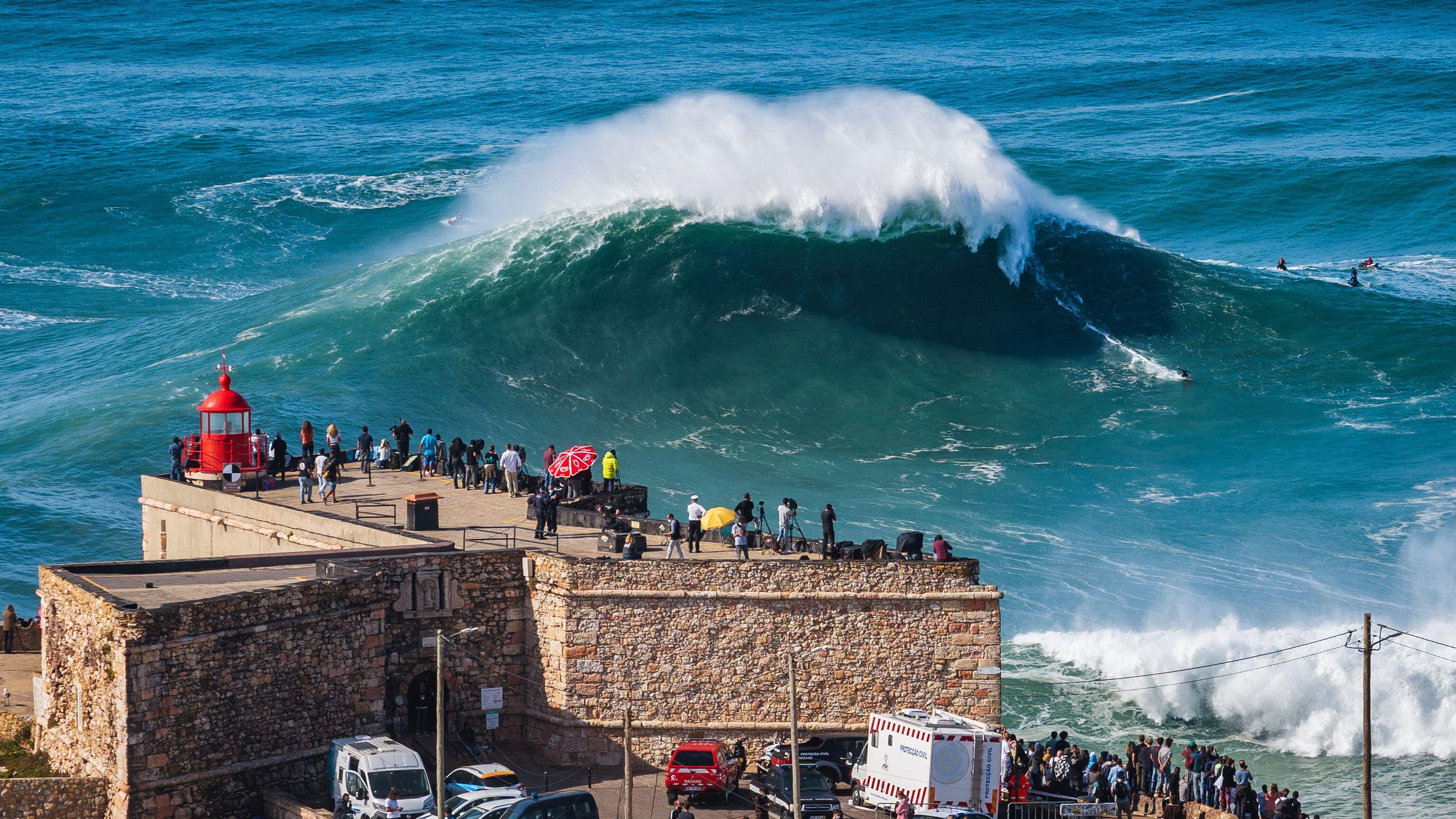
Name: Nazaré
Location: Portugal
Coordinates: 39.60456272264274, -9.084987229844717
Why it's incredible: The coastal town hosts the world's biggest surfable waves.
Nazaré is a hotspot for monster waves on the Portuguese coast. Every year, between October and March, "big-wave" surfers hit the small fishing town during an annual peak in wave size, when the water regularly surges five stories high — and occasionally reaches twice as high.
Due to its enormous crests, Nazaré is the place to be for record-breaking surfers. In April 2024, German surfer Sebastian Steudtner likely set a new world record for the largest wave ever surfed when he took on a behemoth provisionally measured at 93.73 feet (28.57 m) tall. The record has yet to be officially ratified, but if it is validated, Steudtner will have supplanted his own current world record of 86 feet (26.21 m), which he set in 2020. The two previous world records of 80 feet (24.4 m) and 78 feet (23.8) were also achieved at Nazaré in 2017 and 2011, respectively.
Related: Gargantuan waves in Earth's mantle may make continents rise, new study finds
In October 2020, 18-year-old Portuguese surfer António Laureano rode a gigantic wave at Nazaré that researchers later estimated was 101.4 feet (30.9 m) tall. However, this attempt was never officially ratified by the World Surf League due to the method used by the scientists to calculate the wave's height.
The waves at Nazaré reach such giant proportions because they form inside the Nazaré Canyon — the largest submarine canyon in Europe, which stretches 130 miles (210 kilometers) long and roughly 3 miles (4.8 km) deep in the Atlantic Ocean southwest of Nazaré.
Water inside the canyon travels faster than shallower water, forming large waves at depth that are "bent" in the direction of Nazaré, according to NASA's Earth Observatory. As they approach the coast, these large waves run into waves coming from the northwest, and this collision forms the truly supersize waves that surfers prize.
Nazaré churns out some jumbo waves, but it's not the site of the biggest wave ever recorded. That title belongs to Lituya Bay in Alaska, which produced a frightening 1,719-foot-tall (524 m) wall of water after an earthquake triggered a landslide directly into the bay in July 1958. That wave killed five people and leveled trees on the slopes surrounding the bay.
And while the Nazaré Canyon explains why massive crests form on this stretch of Portuguese coast, humongous waves can also occur seemingly from nowhere. Rogue waves, also known as freak or killer waves, are waves that are at least twice as high as the surrounding sea state. They are different from tsunamis in that they don't result from water being displaced by an earthquake, landslide or volcanic eruption. Instead, researchers think rogue waves are born from smaller waves merging into larger ones, either due to high surface winds or changes in ocean currents caused by storms.
Discover more incredible places, where we highlight the fantastic history and science behind some of the most dramatic landscapes on Earth.







